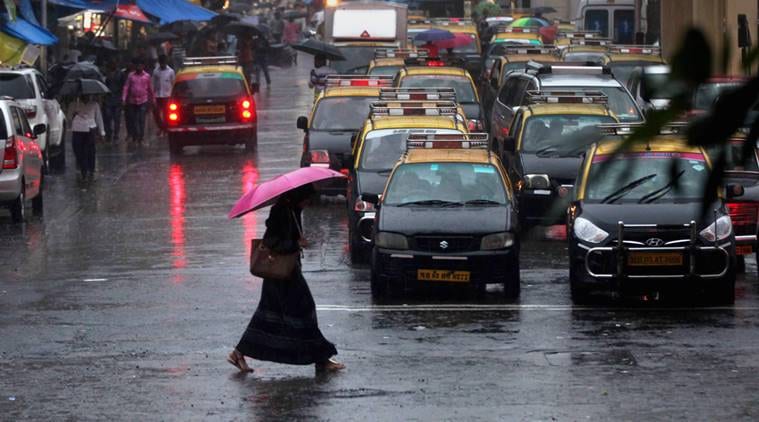 Heavy rainfall within a short duration, a recurring monsoon woe, has put to test the city’s existing drainage system that can drain up to 50 mm water per hour. (PTI)
Heavy rainfall within a short duration, a recurring monsoon woe, has put to test the city’s existing drainage system that can drain up to 50 mm water per hour. (PTI)
Taking note of the recent “extreme” weather events, the Brihanmumbai Municipal Corporation (BMC) is mulling over constructing underground ponds in South Mumbai. A variant of the proposal was discussed last year for the first time and a nominal allocation was made in the civic budget, sources said.
Heavy rainfall within a short duration, a recurring monsoon woe, has put to test the city’s existing drainage system that can drain up to 50 mm water per hour, officials said, adding that the city additionally required space to store the excess rainwater to mitigate flooding.
Drawing from the flood tunnels of Tokyo, Japan, and the underground ponds of South Korea, civic officials said similar water-retaining structures could also be built in the open spaces in South Mumbai. The excess rainwater stored in these tanks or ponds, they said, could be later pumped out with the help of pumping stations.
“These extreme events may become more frequent in the coming years because of global warming. We need to augment (the existing drainage system) to handle these extreme events and have to plan to collect extra rainwater. Water stored in these tanks can be pumped out into the sea after the rainfall stops. Technically it is not very difficult. I have held a meeting with the department officials and discussed that all new projects should be planned considering such weather events,” Additional Municipal Commissioner (Projects), P Velrasu, said. He added a lot of retrofitting would, however, be required in the old drainage networks of the city to implement the proposal.
On August 5, several areas of South Mumbai were inundated after the island city reported its heaviest single-day rainfall for August in 46 years with 293.8 mm rain. Many areas in South Mumbai that usually do not see flooding remained waterlogged for hours. In areas like Churchgate, Marine Drive, Fort, Girgaum, Khetwadi, Walkeshwar Road, J J Marg, Gol Deol, Bhendi Bazar, and Kalbadevi, rainwater entered into several houses. The city received another heavy bout of rainfall the following day further aggravating waterlogging.
Officials from the Storm Water Drainage department said ways to mitigate flooding was discussed by it. “It (underground ponds) could be a costly thing, but for a city like Mumbai we have to think about long-term measures,” a senior officer from the department said.
Earlier, the BMC had planned to build a holding pond to collect excess water of Powai and Vihar lakes, which overflow into the Mithi River, to prevent flooding in adjacent areas. The civic body has already floated tenders to appoint a consultant for the project.
Last year, then Municipal Commissioner Praveen Pardeshi had initiated the construction of a huge underground tunnel to store excess rainwater on the line of Tokyo’s flood tunnel. Experts from Japan had visited the city and given their opinion that such tunnels can be constructed in Mumbai. Pardeshi had also involved Japan International Cooperation Agency (JICA) for funding. The civic body also made a budgetary provision of Rs 5 crore in February. However, officials from the SWD department said no progress has been made since then.
A retired engineer from the SWD department, D K Pathak suggested that watertight drains could also emerge as a solution for Mumbai’s monsoon flooding woes. “When heavy rain coincides with high tides in a sea, the rainwater receding capacity of drains are badly affected and low-lying areas remain flooded for hours. If outfalls are below or at sea level then during high tides and heavy rain, water is bound to come back to the drains and trigger flooding,” Pathak said. Watertight drains can allow the rainwater to reach the pumping stations and from there it can be pumped out into the sea, he added.
“In the Netherlands, there are several areas that are seven to eight meters below sea level. They have built such watertight drains to prevent flooding,” Pathak said.
Urban planners have welcomed BMC’s move but said that it should not be a knee-jerk reaction to Wednesday’s event. “It will require substantial streamlining of overall plans and larger system thinking,” Pankaj Joshi, executive director of Urban Design Research Institute, said.